Climate and sustainability haven't always been first in the minds of the people who live in the Talbot-Triangle Eco-Innovation District in Dorchester, Massachusetts, and the surrounding community. Gail Latimore, executive director of Codman Square Neighborhood Development Corp. (CSNDC), knows this. Even as her organization has spent the last eight years focusing on environmental and energy sustainability, she knows that her community has a lot of other things on its mind.
It's not that people of color in inner-city neighborhoods aren't concerned about environmental issues, she says. "But they have a lot of other issues that are worrying them, like how to keep a roof over their head and making sure they have enough money to meet their basic needs."
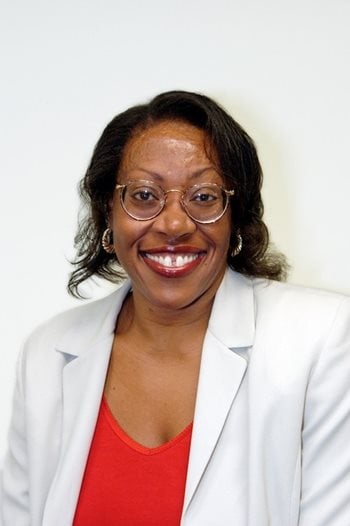 The organization sees sustainability not just as a means to help the planet and minimize their environmental footprint, but as a way to help people with the things that are first in their minds, Latimore says. "For us, energy and environmental sustainability have to make sense in how they impact people's health and pocketbooks."
The organization sees sustainability not just as a means to help the planet and minimize their environmental footprint, but as a way to help people with the things that are first in their minds, Latimore says. "For us, energy and environmental sustainability have to make sense in how they impact people's health and pocketbooks."
Toward that end, CSNDC has facilitated energy retrofits, or energy conservation measures that improve a home or business's performance. It also saves residents money and impacts air quality. CSNDC has worked to help stimulate greenspace development, converting a vacant lot into a city-managed park and supporting the neighborhood in starting several community gardens.
David Queeley, director of Eco-Innovation for CSNDC, says the idea is to demonstrate neighborhood-scale sustainability and work with residents to expand the notion of sustainability. That means working on everything from green jobs to supplying rain barrels, creating walking trails, and talking about climate justice and solar energy. Once demonstrated, he says, "the hope would be recreating the neighborhood someplace else in another part of Boston."
The Eco-Innovation District is 46 acres, Queeley says, and more than 80% of the residents are people of color. As the organization engages different grants, including those from NeighborWorks America, the Kresge Foundation, and the EPA, CSNDC adds new dimensions to the neighborhood. But the eco-innovation efforts also necessarily involve and engage the greater community, says Latimore, who has always had an interest in the environment.
CSNDC worked on getting solar to 350 units in their rental portfolio, for instance. Those units have seen $200,000 in savings since 2018, when CSNDC first turned on the switch, Latimore says. Now, the organization is in the process of trying to "net meter" excess solar energy, which would allow credit for excess energy created to reduce expenses at other properties.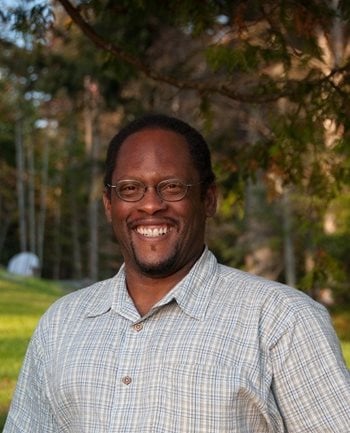
CSNDC also worked with several households in nearby neighborhoods to start using solar power. The people who now have that energy serve as ambassadors, talking to the community about the benefits. Latimore says one of the residents received help through NeighborWorks rehab funding. The $5,000 "recoverable grant" went to the homeowner in return for civic engagement.
"We like that model because it returns our sustainability work and it also gets them civically engaged," Latimore says. Civic engagement is important in communities, and models the resident leadership shown by Dorothy Mae Richardson, whose work in her Pittsburgh neighborhood helped to save it.
"The solar is working so great," says Luis Castillo, a solar ambassador. "I didn't know anything about solar until they came to me."
Castillo says now, though he's paying off his loan for solar installation, he doesn't pay an electric bill – his solar panels generate more than enough energy every month. "This is the best decision I ever made," he says. "Now I want to even change my car to electric."
He tells friends and his community about the benefit of solar energy. "We have to educate people," he says.
Latimore says residents in the neighborhoods work together on climate issues and mental health issues, which can be linked. A heat map showed CSNDC's neighborhood was one of the hottest in the city because of lack of green space and lack of green canopy. And a doctor in the community confirmed that heat can exacerbate some mental conditions. The community is working to create more green space and more of a green canopy, Latimore says. CSNDC planted more than 200 trees and bushes over the last year, offering some to residents and explaining that in addition to looking pretty and cooling things off, trees generate oxygen, absorb carbon dioxide and asthma-causing aparticulate matter, and protect homes from wind, which could impact heating bills.
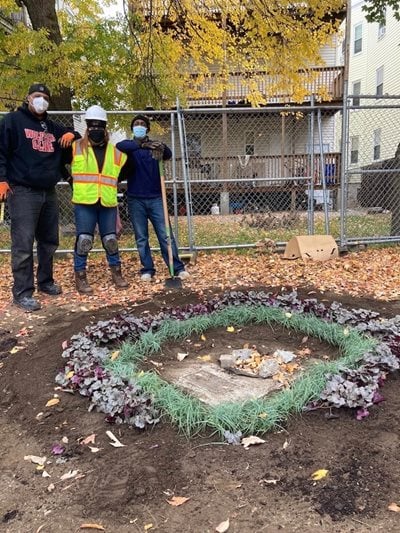 A number of them were fruit trees, says Queeley, apple, peach, cherry, bartlett pear and fig, which provided a food source as well.
A number of them were fruit trees, says Queeley, apple, peach, cherry, bartlett pear and fig, which provided a food source as well.
Through the Fairmount Indigo CDC Collaborative, CSNDC worked with other organizations and the state to activate the Fiarmount commuter rail line, which once went through their neighborhoods without stopping. Over the past decade, five new stops have been added, seeded by the state. Meanwhile, the collaborative has created 1,000 units units of transit-oriented, mixed-use housing. "It may not sound like much," Latimore says. "But for Boston? It's significant."
At the same time, they've worked together to create a greenway along the corridor with input from residents. CSNDC turned a 23,000-square-foot vacant lot that abuts the rail line into an urban agriculture site. "We produce 3,000 pounds of produce out of that site," Latimore says, selling it at a reduced rate to the community, which has few grocery stores.
Members of the Fairmont Collaborative encouraged their residents to form climate justice groups. Common themes arose, from concerns about mental health to concerns about green space and air quality.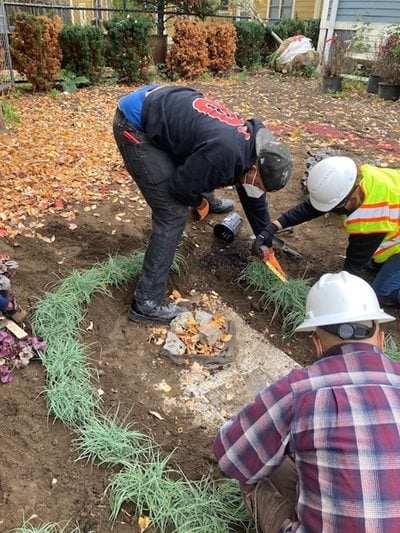
Corey Thompson, who grew up in the neighborhood, is a member of CSNDC's climate justice group. He returned to the community after living in Washington, D.C., and now resides in his childhood home. "I see the value in coming together as a community," says Thompson, who participates in the group's regular Zoom calls. "As a group we've been talking about devices we received that monitor air quality and atmospheric conditions." They also work on policy, trying to tie climate and resiliency to workforce development, helping community members get jobs in the industry related to climate change."
The goal of the group, and of Thompson's work as a real estate developer outside of the group, is to have an impact on climate and workforce development at a community, city and state level.
"Engaging residents is critical," Queeley says. "We can't take on the needs of an entire neighborhood. But we can give them the tools to empower and support themselves."
Another green project? CSNDC also received a grant from The Nature Conservancy’s North American Cities program to establish a Green Infrastructure Training and Certification Program. Similar to LEED Training, the program includes courses and an exam, which Latimore (who once wanted to be a forest ranger) took and passed. Now, CSNDC is working with partners on job placement.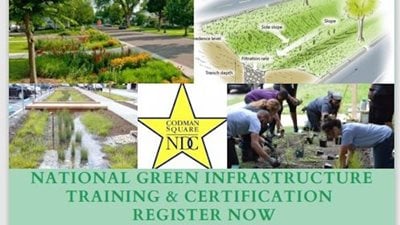
Queeley says a few companies in Boston are offering green infrastructure-related internships to program graduates, and one resident graduate will likely begin work at a green roofing company. Queeley expects more people to take the final exam soon.
Latimore says the organization is making headway. From the day CSNDC received its first grant for the Eco-Innovation District, the No. 1 priority was to make the connection between the environment and people's pocketbooks and health. "To engage people in this work, you've got to make it relevant," Latimore says. "There has to be a connection."
Queeley agrees. The aesthetic changes in the community are obvious, he says. CSNDC is providing data to the community to help underscore the less visible efforts and improvements.
"We're seeing a groundswell of people becoming much more environmentally conscious in our community," says Latimore. "I can see it growing."
02/05/2021

